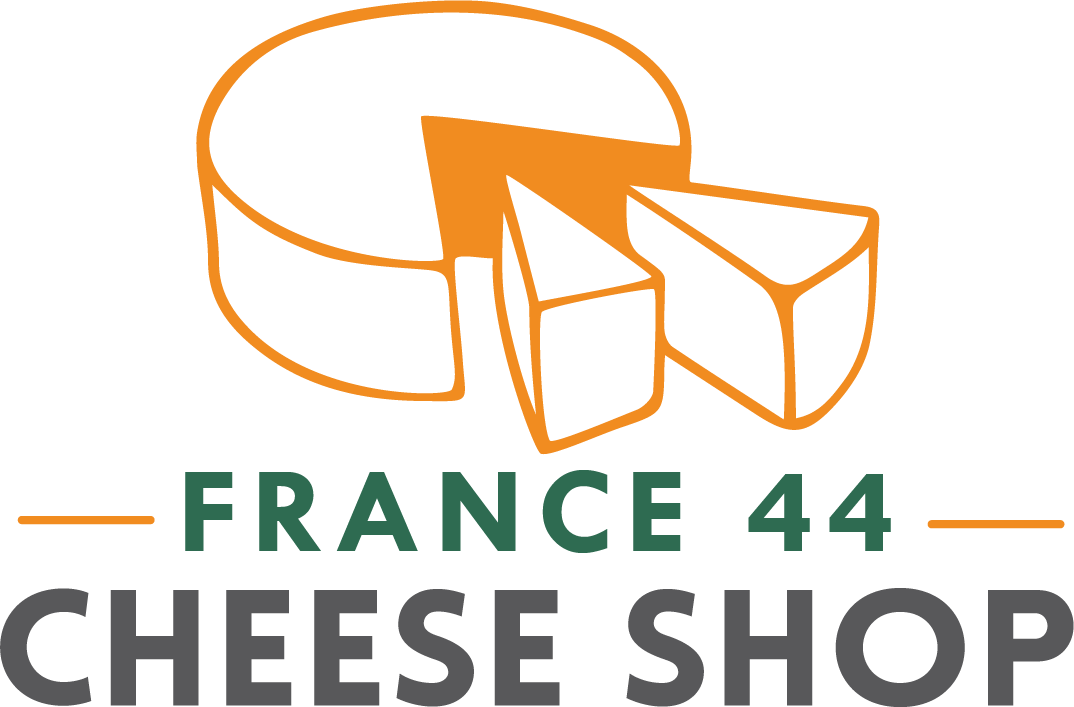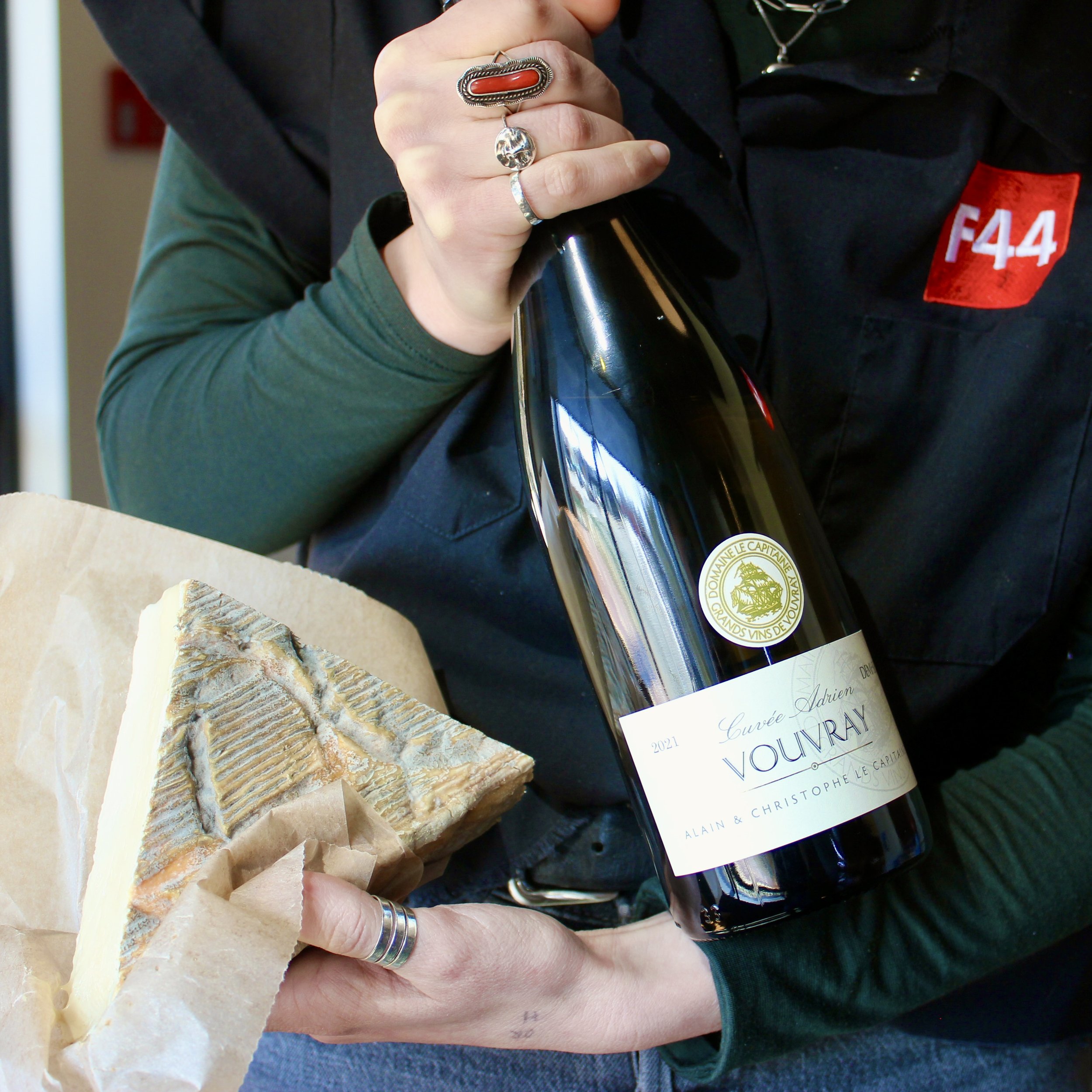by Austin Coe Butler
Mozzarella season is my favorite season, and for those of you who have enjoyed our fresh mozzarella, I bet it’s your favorite season, too. Its return to the shop is a sign that Spring has arrived—no matter how dazed.
Mozzarella is a pasta filata style of cheese, meaning “stretched curd” or “spun paste.” This name is demonstrative of how cheeses in this style are made: starting with curd, boiling water is added until the curd begins to melt or stretch into an elastic “paste,” at which point it is pulled into strands and formed into a variety of shapes. At the scientific level, the boiling water loosens the (casein) protein structure, aligning them into strands with pockets of fat and whey in between. Burrata, provolone, scamorza, caciocavallo, string cheese, and many other cheeses from around the world are made following this technique.
Mozzarella takes its name from mozzare meaning “to cut, chop” and that’s exactly how this cheese is made. Those long “threads” are bundled into a ball and then “cut” by hand. Mozzarella as we know it originated in southern Italy, with written records dating from the 16th, but undoubtedly it and other pasta filata cheeses have been around for much longer. The Italians would call our mozzarella fior di latte as it is made from cow’s milk. The title of mozzarella in Italy is reserved for water buffalo’s milk.
Because of its elastic nature, mozzarella can be formed into a variety of shapes, from simple ciliegene (small, cherry sized balls), tied in knots (nodini), or woven into braids (treccia). Master casaros can sculpt the cheese into little pigs, pacifiers, even the divinely inspired Treccia di Santa Croce di Magliano, a shawl woven from mozzarella. Among the most impressive are maybe Georgian tenili cheeses. Then there are the stuffed cheese like the suggestively shaped, milk filled zizzone, or la filiata, a “pregnant” mozzarella filled with smaller balls of mozzarella.
Without divulging my secrets, here is how I make fresh mozzarella at France 44. On Friday and Saturday mornings I break up the cold blocks of firm curd by hand in a large bowl. Then, I pour over boiling brine and cover the bowl with a lid, waiting a few minutes for the curd to temper. Once the curd is warm, I pour off most of the brine and add new brine to the bowl. At this point, the magic of mozzarella begins. Working quickly with a large paddle, I start to twirl the curd, plying it onto the paddle and lifting it into the air, high above my head. Thin, thread-like strands begin to form immediately and draw out as a beautiful waterfall-like sheet of curd unfurls. I do this only about twice to work most of the lumps out. It’s important to not overwork the curd as this can lead to squeaky, tough mozzarella. Just as perilous is melting the curd with too much boiling water.
Then I plunge my (clean!) bare hands into the boiling brine and quickly pull the threads into a tight ball before cutting it free from the rest of the mozzarella by pinching my thumb and forefinger closed. I wrap the hot mozzarella in plastic wrap and let it sit while I continue to pull the rest of the batch. As it cools, the mozzarella retains its spherical shape. (The traditional way to reserve fresh mozzarella is to leave it in brine—but this isn’t practical for us.) The actual process of making mozzarella takes less than a minute. Of course, I have to sample the mozzarella to make sure the seasoning is right, and as it’s often the first thing I eat in the morning along with my coffee, I’ve found that mozzarella and black coffee is quite a nice pairing, almost like having a bit of cream.
I’ll typically make a few burrata as well, adding truffles, nuts, herbs, or seasonal fruit to the stracciatella filling that goes inside burrata. Sometimes I’ll make a sfoglia for the staff to eat, a popular snack at caseificios wherein mozzarella is stretched into a sheet covered in prosciutto, arugula, balsamic vinegar, or whatever filling you like, then rolled tightly and cut into slices to be eaten by hand.
Fresh mozzarella is best enjoyed on the day it was made and at room temperature, preferably the same day it was made. If I don’t devour it immediately, I leave it out on my cool kitchen counter away from the sun for 24-48 hours. Refrigeration prolongs the life of fresh mozzarella for about a week, but at the cost of the cheese’s texture and flavor—that supple, buoyant spring tightens up and the milky brine is soaked back into the cheese. Of course, fresh mozzarella is great in all the traditional applications: in a sandwich, on a pizza, in a caprese salad with ripe tomatoes, basil, and balsamic vinegar. But consider trying it in something new this year, like supplì al telefono, or garnished with chili crisp or a smoky, spicy salsa macha. It’s delicate, milky flavor makes it highly versatile.
If you haven’t made fresh mozzarella before, I encourage you to take a mozzarella making class with me this summer! Without a doubt these classes are the most fun I have at France 44. We dunk our hands into scalding hot water, stretching and spinning the cheese, screaming with laughter, all while Italian retro hits from the 70s blare in the background. At the end, we eat the fruits of our labor. Everyone, no matter how filled with trepidation or self-doubt, always leaves having made fresh mozzarella they share with their friends and family. I have to say, to this day my best student has been an eleven year old girl! You know who you are!
We frequently sell out of fresh mozzarella and burrata, so I’d encourage you to stop by the shop as early as you can to pick up one of these soft, still warm, balls of mozzarella.





